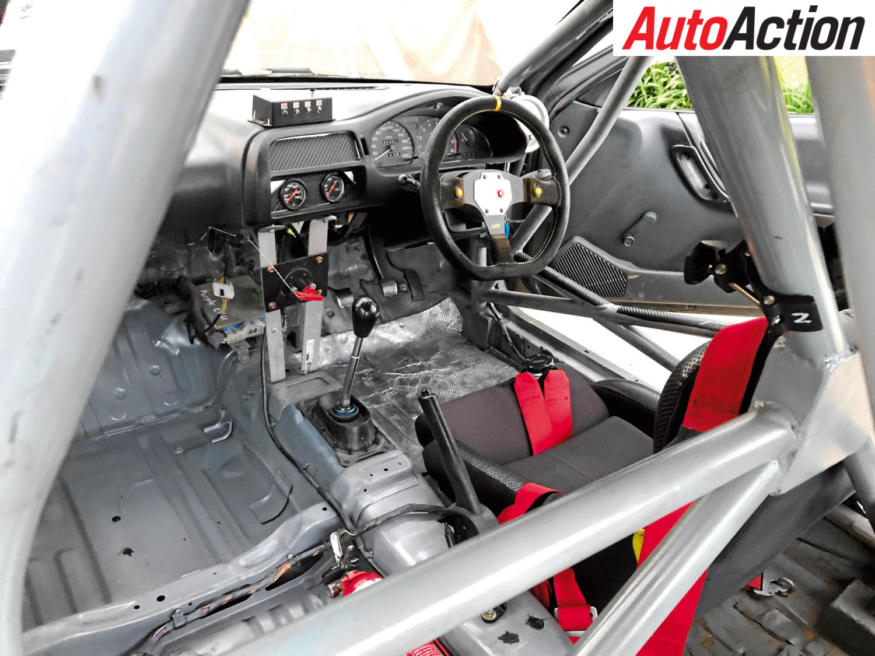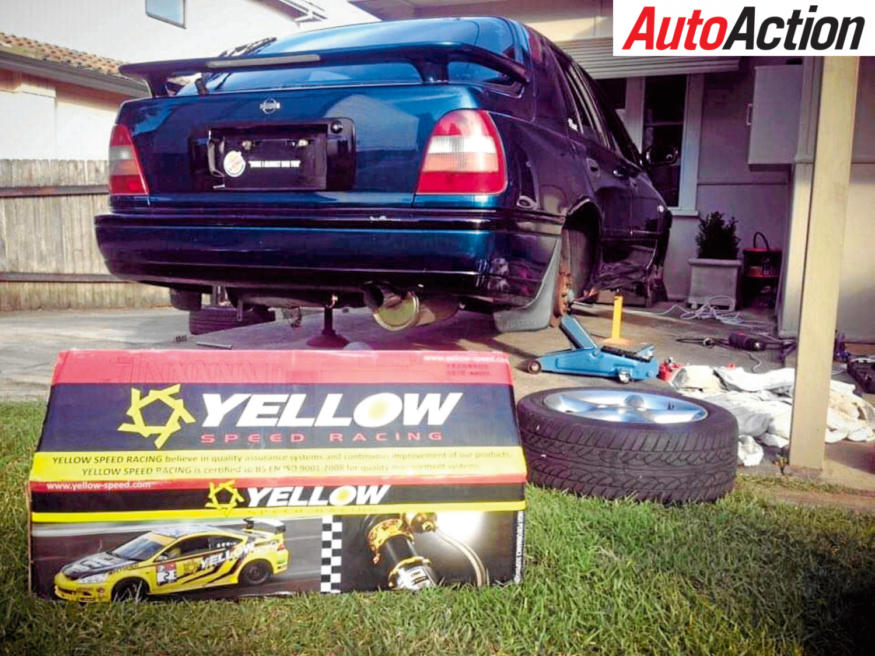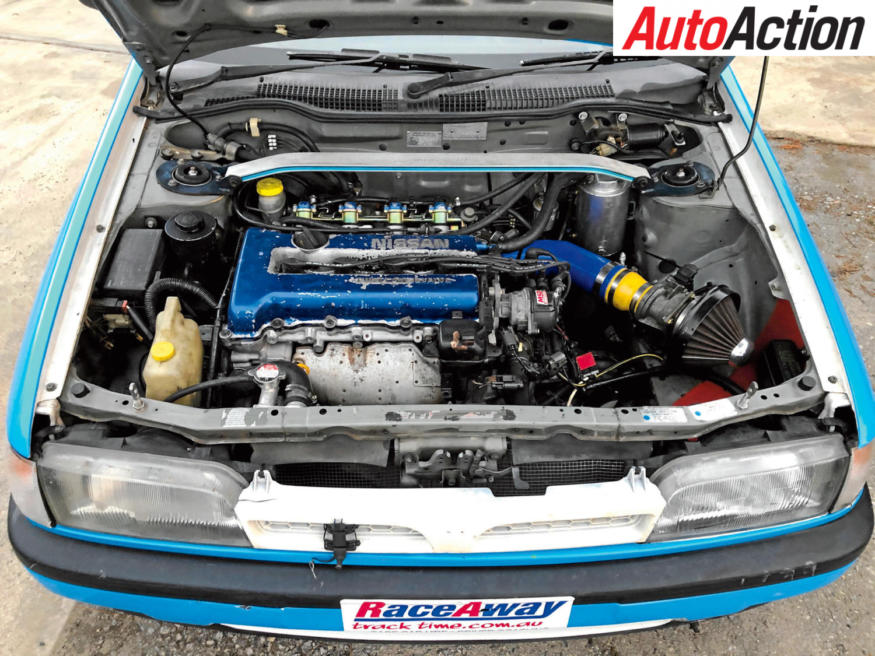COST OF RACING: APRA – ANOTHER AVENUE

One-make classes are all the rage in motorsport right now. Carrera Cup to Hyundai Excels, Mazda RX-8s to Toyota 86s … and everything in between. To that you can add 1990s Nissan Pulsars, as Heath McAlpine discovered.

New South Wales is home to a variety of one-make categories, including the Hyundai Excels and Mazda RX-8 Cup, and now the Nissan Pulsar series.
The Australian Pulsar Racing Association (APRA) was formed out of the Pulsar Challenge seven years ago, with the APRA going through a significant rebranding and transformation three seasons ago, which has proved highly beneficial.
Much like any of the one-make grassroots categories currently racing across Australia, APRA uses a stock standard base car – in this case an N14 or N15 Australian-spec Nissan Pulsar – and allows replacement of selected components for racing.
It has become a proven winner.
APRA has grown from six cars running at Winton and Wakefield Park when first established, to more than 40 entries which need to be split into two grids.
“We’ve had that growth for the last three years or so, but this year it doesn’t look like it will slow down,” explained Damon May, APRA NSW director
“We’ve lost a few competitors from the front of the field, who have moved on to other categories but not ones that are similar to Pulsars, rather the Australian Production Car Series and other classes along those lines.
“That being said, whilst we’ve lost a couple up the front, we’ve picked up another 10 competitors with cars currently or already built last year, that are coming into the category this season.”
The Pulsar package is quicker than an Excel, which May points as one of the attractions of joining the class, so too the ability to construct a cost-effective entry that’s competitive and can be upgraded progressively.
Decisions on the direction of the category are made by competitors through a director group consisting of five in NSW and one Victorian.
“Last year we had 66 points-scoring vehicles at different rounds,” said May.
“This year we’re expecting 70 competitors and we have just under 100 members, so when we make decisions as a director group, whether it was regulations or how the dollars are spent, we need to take into account both ends of the spectrum.”
Some of the decisions made by the group include the introduction of three-day meetings, racing under lights at Sydney Motorsport Park, interstate events, and the introduction of a control LSD.
First of all, a membership for APRA costs $150 as a competitor and for those non-competing, it’s $60.
Currently, APRA race at Motor Racing Australia one-day meetings at a cost $300-$400 per round, with the season consisting of eight events.
For the 2021 series, the category will conduct a one-hour endurance event under lights at SMP and a non-series promotional event to increase interest in Victoria.
Working closely with grassroots motor sport broadcaster Blend Line, livestreaming, television coverage and even radio simulcasts provide various options for audiences to keep up to date with APRA events.
Anchored by Auto Action’s own Garry O’Brien and paired with a pit reporter, these are investments made by APRA which has helped in attracting sponsorship.
In Victoria, the class is just starting to gain traction with 10 entries regularly competing alongside the Under 2.0-litre Sports Sedans.
So, how do you get involved?

To start, an Australian-spec Nissan Pulsar N14 or N15 is required, then making the choice between a bolt-in or weld-in cage follows.
A 2.0-litre engine is installed as is the bigger brake package from the N15, which can be fitted to an N14.
Unlike the Toyota 86 or Mazda RX-8 Series there is not a kit available, however there are control components which need to be fitted before the joining the grid.
Josh Craig is the reigning two-time APRA champion and is regarded as one of the leading developers in the field.
He explained the secret to success is buying a clean base Pulsar at low kilometres.
“When choosing a suitable Pulsar, it should have around 150-200,000km, which is low for its age,” said Craig.
“It’s generally clean and tidy to make a good starting point. That way, the body is usually pretty good and most of the parts are pretty decent. You’re not rebuilding or re-doing seals and the brakes.
“If you buy something that is really old and pretty worn out, you’ll have to buy brand new parts instead of just repairing them.
“Usually N14s are hard to find but N15s you can find a decent one for $1500 if you’re lucky.”
Craig advised that a decent Pulsar could be built for $10,000, however front-running builds can cost $20,000-$25,000, and either way most of the work can be undertaken by the competitor, though this is dependant on their mechanical proficiency.
“A lot of the work, if you’re mechanically minded and do your own servicing, most of the car can be done in a competitor’s garage,” said Craig. “As a result, the cost is lowered.”
Many aftermarket components are also becoming cheaper on the strength of a growing competitor base.
“The availability of aftermarket parts is growing for the components we all use,” added Craig.
“A lot of us do a brake booster delete, so those type of components are becoming more available now, whereas they weren’t before. Others include electric power steering, water pump, items like that are becoming more accessible and cheaper because there are more competitors in the category.”
Engine modifications are limited to the exhaust, which is free after the extractor. A new exhaust can cost northwards of $350 and can be fed either out the back or the side.
Craig explained the tight nature of the APRA regulations.
“There’s not much you can do,” he said. “New bearings and seals, the only thing you can do is go slot +40 in the piston, but everything else is standard. Cams, valving and heads have to remain standard, there’s only a minimum you can shave off the block.
“Send injectors away to get checked, but this a preventative measure against not having any problems while you’re racing.”
Servicing is restricted to checking the oil each meeting.

The control Yellow Speed suspension package is $1200 for the set, which includes springs and dampers. Craig is complimentary of the Yellow Speed component package. Having raced with a set for three years, he has just replaced it.
“Recently we decided to get a new set and compared those with the old set at a shock dyno just for curiosity,” explained Craig. “We tested them back-to-back and there wasn’t much difference between the shocks at all, and that’s after three years of track days and racing.”
Brake pads are free however many competitors, including Craig, use Winmax costing $350 a set and these generally last two meetings for the frontrunners.
Rotors are $200 each and are machined when new pads are fitted, adding an extra $30-$40 each time.

MRF provide the Control Tyre at a cost of $185 each. Leading contenders will replace the fronts at every meeting, then move the older rubber to the rear. In some cases, competitors sell tyres to others in the field at a discounted rate.
Rims are also free at a size of 15×6.5 or 15×7 with popular manufacturers including Lenzo, Rota and Enkei being run within the field.
Craig uses Lenzo rims, which can be purchased for $750 a set.
A forward-facing GoPro is mandatory for the category at a cost of $300, but a radio is optional, though are a worthy $1500 investment in such a big field.
“It’s pretty handy if there is an incident or when I’m gridding up, my crew can let me know how many cars are left to grid up because there’s 40-odd cars,” explained Craig.
“It’s good to have a radio to be notified if I’ve hit traffic or on a slowdown lap to not impede.”
Gearbox oil is changed every two-three meetings and the installation of a heavy-duty clutch is advised, but the flywheel is an OEM part.
Craig emphasised the need to be easy on the gearbox by not rushing the shifts.
A control LSD will be introduced to the category made by Mfactory to aid in the gearbox breakages, which have been identified as a weakness. This is expected to cost $1300.
Craig spends $1000 at each meeting, which includes accommodation, entry to the pre-event regularity for testing and all costs associated with contesting a race meeting.
Chris Butterfield initially took his racing a little less seriously, but has increased his focus the more seasons he has competed.
The base for his Pulsar was discovered in a ‘housos’ front yard and was bought for $500, after which it cost $10,000 to build into an APRA car, including an $1800 bolt-in cage.
“Because it was our first build, the next one will be a lot cheaper,” said Butterfield.
“We learnt along the way finding and meeting people. If you know the right people you could build one for $8000 or less.”
For a front running engine Butterfield estimates the cost to be between $4500-$5000 and he buys two tyres every round at a cost of $370.
Butterfield’s sponsor 4Mance specialises in SR engines and regularly inspects his powerplant, which was bought from another competitor for $3000 a couple of seasons ago.
Previous to that he used the engine the car came with and it kept going despite irregular servicing. Ultimately, a split hose lead to a blown head gasket requiring the need for a new engine.
Improved Production and TCR competitor Jordan Cox handles the gearbox servicing for Butterfield’s Pulsar one or twice a season, depending on the number events, plus the pre-event set-up at a cost of $120.
Butterfield changes the Winmax pads halfway through the season, rotors are also changed once as well.
Pump fuel is used with Butterfield budgeting 40-litres at around $80 per round.
There is no radio in Butterfield’s Pulsar, he uses hand signals instead and once all his season expenses are calculated, his season budget works out to be $8000 or $1000 a round.
The challenge of a $10,000 build has been set by Alexandra Lawrence.
She is currently undertaking her third APRA build alongside her father and purchased an N14 from a farmer with the potential race car being found in a paddock.
Lawrence bought her new Pulsar for $450, an automatic, and is setting about putting a weld-in national specification cage at a cost of $4000.
“The whole reason we’re building this car is because I want one with a weld-in cage,” said Lawrence.
“I’ve been in this series since 2016. My dad and I built our first car during 2015, which was an N14. Then we built a N15 because dad and I thought it would be faster but I crashed it, so we re-shelled it.
“I left the series for a couple of seasons before returning in someone else’s car and it had a bolt-in cage, while the others I built with my dad (apart from the first) had a weld-in, but I just wasn’t fast in it.”
Lawrence has bought all the safety items required including a fire extinguisher for $40, six-pole battery isolation at $85 with a $50 cut-off cable.
Other items such as seat, steering wheel and window net have all carried over from her previous Pulsar.
Work has also begun on converting the power-steering and water pumps to electric, which provides a performance benefit, plus increases reliability
“The stock power-steering and water pumps can be changed from a pulley system to an electric system, which increases horsepower because there is less drag with the pulley side of the engine,” said Lawrence.
“I’ve also heard if you lose a water pump at the track it is a really hard item to replace.”
An engine build Lawrence approximates at $5000 through a number of Sydney-based workshops.
Turbotec provide the category heads, costing $305, while exhausts have been quoted between $500-$700.
Items to watch include the water hose, which runs near the firewall, and can burst but is inexpensive to replace. An oil accumulator is recommended as baffled sumps are not permitted, while overfilling avoids surge.

An engine and gearbox oil change occurs every three to four meetings.
Lawrence is deciding between using Lenzo or Rota rims after previously using Enkeis.
Describing her racing as towards the ‘bottom end’, Lawrence does not fit new tyres at each event and budgets for $500 per round, including the $350 entry fee.
Also a fan of Winmax pads, Lawrence uses a set every three to four race meetings with the rotors machined post-season, with these lasting quite a while.
Trent Murray looks after Lawrence’s pre-event preparation using a laser wheel aligner and scales, plus supplying a set-up sheet at a cost of $400.
Also passed through previous Pulsars that Lawrence has owned is a Racelogic GPS sensor and camera system featuring predicted time, which retails for approximately $2000, while a Macron lap timer provides other key information.
The growth in fields in New South Wales has spurred the directors to target expansion into other states.
In Victoria, the class features 10 regular entrants running within the local Under 2.0-Litre Sports Sedans category.
“From a category management perspective, our focus is definitely on Victoria this year and then Queensland the following season, to try and attract a few more people across,” said May.
Could Pulsars be the next big thing to follow the Excels?
It just may well be. The product follows similar principals, giving competitors flexibility in their racing programs in terms of format, circuits and the level of specification that can be built or upgraded.
However, the category is at a critical point where low costs need to be maintained at a level of specification which cannot afford to become too advanced.

COST GUIDE
APRA MEMBERSHIP
Competitor $150
Social $60
ENTRY FEES
$300-$400
CAR
Donor Pulsar $450-$2000
New build $8000-$15,000
Used market $10,000-$25,000
ROLL CAGE
Bolt-in cage $1800
Weld-in national $4000
RACE ENGINE
$3000-$5000
SUSPENSION PACKAGE
Yellow Speed – MX-5 Mania $1800
CONTROL LSD
Mfactory $1300
BRAKES
Winmax pads $350 a set
TYRES
MRF control item $185 each
Full support is provided at every meeting


